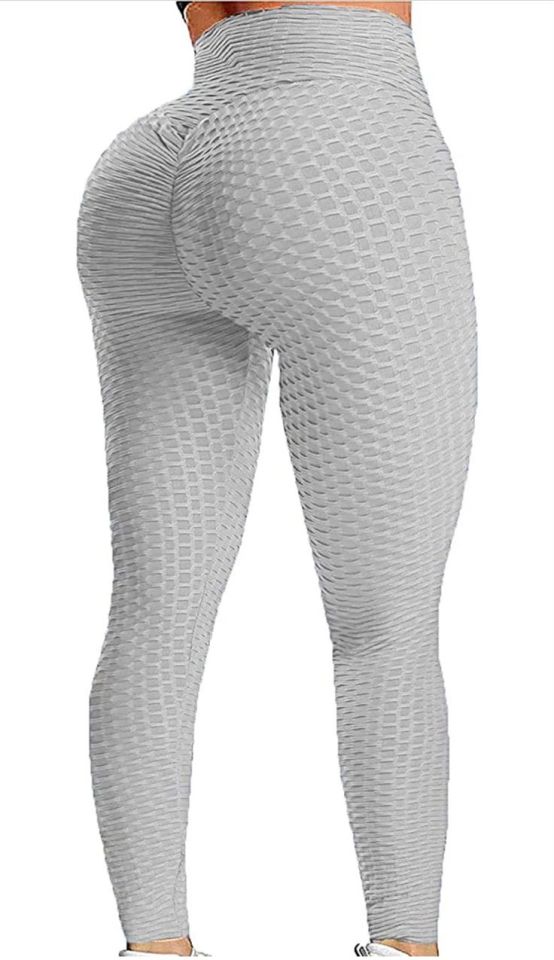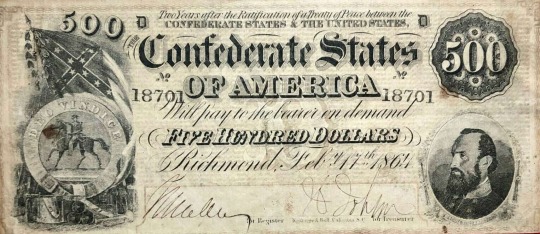#houston clothing manufacturer
Explore tagged Tumblr posts
Text
Your Trusted Houston Wholesale Clothing Manufacturer

Discover top-quality wholesale clothing solutions in Houston with Alanic Global. Elevate your retail business with our diverse and stylish apparel collections. https://www.alanicglobal.com/usa-wholesale/houston/
#houston clothing manufacturers#clothing manufacturer usa#clothing manufacturers houston#houston clothing manufacturer#clothing manufacturer in usa#us clothing manufacturers#manufacturer of apparel#houston#usa
0 notes
Photo

Alanic Global - The Premium Quality Clothing Manufacturer In Houston
Looking For The Best Wholesale Clothing Manufacturers In Houston? Alanic Global is the right place for bulk buyers.
#private label clothing manufacturers houston#wholesale clothing vendors houston#clothing manufacturers houston#houston clothing manufacturer
0 notes
Text

9 Awesome Ways To Wear Sleeveless Tops
Elevate your sleeveless top game with 9 creative styling ideas. Whether it's casual or chic, mix and match with layers, accessories, or statement bottoms. Perfect for any wardrobe! https://www.alanicglobal.com/blog/9-awesome-ways-to-wear-sleeveless-tops/
#clothing manufacturers in Houston#wholesale clothing New York#sleeveless tops outfit#wholesale clothing houston
0 notes
Text
Show off Your Classy Fashion Sense by Wearing an Army Fatigue Jacket in This Way
Do you want to know how to wear an army fatigue jacket to look your best in.

#Army Fatigue Coats Suppliers#Customized Army Jackets Vendor#Fashion Sense By Wearing An Army Fatigue Jacket#Jacket Manufacturers In Houston#Military Coat Supplier#Recycled Army Jackets Manufacturers#Wholesale Army Coat Supplier#Wholesale Army Jackets Manufacturer#Wholesale Clothing Suppliers In Houston
0 notes
Text
Clothing Manufacturer Houston
Elevate your retail game with top-notch fashion from wholesale clothing suppliers in Houston! From trendy must-haves to timeless classics, stock up on styles that'll fly off the shelves.

#wholesale clothing houston#wholesale clothing suppliers in Houston#wholesale clothing vendors houston#clothing manufacturers in houston#custom wholesale clothing houston#clothing manufacturer houston#apparel supplier houston
0 notes
Text

9 Awesome Ways To Wear Sleeveless Tops
Explore creative ways to flaunt sleeveless tops with these nine fashion-forward tips. Transform your outfits and embrace effortless chic. https://www.alanicglobal.com/blog/9-awesome-ways-to-wear-sleeveless-tops/
#clothing manufacturers in Houston#wholesale clothing New York#clothing vendors in houston#how to style sleeveless top
0 notes
Text
Choose USA Clothing Manufacturers for your clothing manufacturing needs! With over 35 years of experience, we guarantee quality tailored clothing at competitive prices. Visit our website to find out more about the services we offer!
#Clothing Manufacturers Houston#Wholesale Clothing Vendors Houston#Wholesale Clothing Vendors USA#clothing manufacters#cloth manufacturers in usa#custom clothing vendors#athletic shorts manufacturers#flannel shirt manufacturers usa#fitness clothing suppliers#apparel suppliers usa#american clothes manufacturers#usa apparel manufacturers#women's clothing manufacturers#white label clothing manufacturers#clothing manufacturers united states#fitness clothing manufacturers usa#best private label clothing manufacturers
0 notes
Text
Get the best quality and stylish fitness apparel from our wholesale Sports Apparel manufacturer. We provide custom workout clothes and unbranded athletic clothes collection for sports and activities. Get the best deals now!

#florida wholesale clothing#wholesale clothing vendors florida#wholesale clothing houston#underwear manufacturers usa#dallas clothing manufacturers#underwear manufacturers#manufacturer underwear#private label clothing wholesalers#wholesale manufacturers in usa#gym clothes manufacturer#clothing manufacturer in usa#sports clothes manufacturers
0 notes
Text

The Perfect Suit Guide: Everything You Need To Know
These rules being unspoken, you get to know what’s wrong only when someone points it out to you.
#Perfect Suit Guide#houston texas#bulk clothing manufacturers in houston texas#clothing manufacturers in Atlanta#Need Help On How To Wear A Suit?#The Perfect Suit Guide
0 notes
Photo

Alanic Global: Top Clothing Manufacturers in Houston, Texas
Alanic Global offers wholesale clothing and accessories in Houston, USA, catering to the diverse fashion needs of retailers and businesses.
#clothing manufacturers houston#wholesale clothing vendors houston#clothing manufacturers in houston texas#wholesale clothing vendors in houston
0 notes
Photo

Alanic Global Is A Leading Manufacturing And Wholesalers In USA
The global brand of wholesale clothing in USA. Get a quote now!
#clothing manufacturers houston#wholesale clothing las vegas#wholesale clothing vendors dallas#wholesale clothing austin#clothing manufacturers new york#wholesale clothing vendors chicago#clothing manufacturers in USA
0 notes
Text
Your Trusted Houston Wholesale Clothing Manufacturer

Discover top-quality wholesale clothing solutions in Houston with Alanic Global. Elevate your retail business with our diverse and stylish apparel collections. https://www.alanicglobal.com/usa-wholesale/houston/
#houston clothing manufacturers#clothing manufacturer usa#clothing manufacturers houston#houston clothing manufacturer#clothing manufacturer in usa#us clothing manufacturers#manufacturer of apparel#houston#usa
0 notes
Photo

4 Impressive t-Shirt Design Trends To Venture Into!
Check out the latest design trends in tees for men that are attracting attention all around.
#private label clothing#private label clothing in california#clothing vendors in houston#private label clothing manufacturers
0 notes
Text

“We send our cotton to Manchester and Lowell, our sugar to New York refineries, our hides to down-east tanneries and our children to Yankee colleges, and are ever ready to find fault with the North because it lives by our folly. We want home manufactures and these we must have, if we are ever to be independent.
—Houston Tri-Weekly Telegraph, 1859
This analysis of the Southern economy on the eve of war was classic. In 1861 the Confederate States had a population of just over 9 million, of whom about 3.5 million were slaves. The population of the United States was approximately 22 million. The South had less than half the railroad mileage of the North, and much of this track (of eleven different gauges) connected points of little military or industrial significance. More than four-fifths of the old Union's manufacturing had been carried on in the North. Southern manufactures in 1860 were worth $69 million, as opposed to $388.2 for the Middle states, $223.1 million for New England, and $201.7 million for the West. Moreover, Southern industries included such enterprises as cigar-making and the processing of chewing tobacco, which would not be very useful in making war on the Yankees. In 1860 the Southern states produced 76,000 tons of iron ore, compared to the 2.5 million tons extracted north of Mason and Dixon's Line. And in the same year Southern iron mills processed less than one-sixteenth of the 400,000 tons of iron rolled in the United States. At birth the Confederate South lacked not only an industrial base, but also the skills, raw materials, and transportation to establish war industries.
Southern capital had long been invested in land and slaves, singularly unliquid asserts. The land and slaves produced-they produced raw staples which were useless in the raw and which as a general rule were refined outside the South. On the eve of war Southern soil grew an estimated four-fifths of the world's supply of cotton. Yet Southern cotton mills were valued in 1860 at about one-tenth of the total valuation of cotton mills in the United States. And armies could neither wear nor shoot cotton bales. Southern farmers raised cattle, but Southern leather products in 1860 were worth $4 million as opposed to $59 million in the rest of the country. Southern farmers raised hemp, but the Confederacy suffered from a severe shortage of rope. There were some sheep in the upper South in 1860, but Southerners had invested $1.3 million in woolen mills compared to $35 million elsewhere in the United States. From the height of hindsight, then, we can see that the Southern agrarian economy in 1861 offered little to a blockaded Southern nation about to engage in protracted, total war. To grasp the economic revolution wrought by the Confederate experience we must constantly recall the military-industrial poverty of its origins.
We must emphasize also two other constants on the liability side of the Confederate balance sheet—the economic role of the Southern army and the rampant inflation which characterized Southern fiscal policy. Both of these factors are and were obvious, but so obvious as to be often overlooked.
Of the 9 million Confederates in 1861, approximately 1,280,000 were of military age, that is, white males between fifteen and fifty years old. Eventually the Confederacy mobilized approximately 850,000 men. With this army marched the Confederacy's hopes of nationhood. Yet an army is essentially a consumer; it produces only security and in the case of the Confederacy sometimes not much of that. The Southern army consumed food, clothing, ordnance, transportation, livestock forage, and more. And of course it consumed these things at a rate much higher than an equivalent number of civilians. Still in an economic context, every Southern consumer-soldier was one less badly needed producer. And this removal of producers from the Confederate economy hurt not only the South's incipient industrial efforts, but also her agriculture.
The other chronic crisis which plagued the Confederate economy involved the spiraling inflation of the currency. On this subject Charles W. Ramsdell has concluded, "If I were asked what was the greatest single weakness of the Confederacy, I should say, without much hesitation, that it was in this matter of finances. The resort to irredeemable paper money and to excessive issues of such currency was fatal, for it weakened not only the purchasing power of the government but also destroyed economic security among the people." The Confederate government, under the guidance of Secretary of the Treasury Christopher G. Memminger, tried to finance the war effort at one time or another by loans, bonds, taxation, and confiscation. When all else failed the Confederacy unleashed the printing presses, flooded the country with fiat currency, and then tried to stay the inflationary spiral by repudiating a portion of its own currency. The effect of the government's monetary policy on Confederate Southerners was incalculable. Wages never kept pace with prices, and salaried men knew genuine privation. Military reverses after 1862 further undermined what shaky faith was left in the currency. In desperation the Treasury Department issued currency "legal tender for all debts private," not public. A government which refused to accept its own money did not exactly inspire soaring confidence. Confederate fiscal policy was characterized by some realism, some blunders, and a pervading illusion that the war would soon be over. It is tempting to scoff at such chaos. But Ramsdell himself conceded, "If you then ask me how, under the conditions which existed in April, 1861, the Confederate government could have avoided this pitfall, I can only reply that I do not know."
Alongside the external problems posed by the length of the war and the federal blockade, the hard facts of Confederate economic life were: (I) the warring South inherited a staple-crop, agrarian economy; (2) inflationary currency was inevitable for a nation trying to carry on a war with only $27 million in "hard" money; and (3) to exist the South depended upon a large armed body of consumers. These liabilities, internal and external, conditioned the economic response to what became a war of attrition. Yet that response, when compared to the antebellum status quo, constituted nothing less than an economic revolution. In contrast to the economy of the Old South, the Confederate Southern economy was characterized by the decline of agriculture, the rise of industrialism, and the rise of urbanization.” - Emory M. Thomas, ‘The Confederacy as a Revolutionary Experience’ (1970) [p. 79 - 82]
3 notes
·
View notes
Video
youtube
💝VALENTINES' HOWE IN 2024'S 🎁
#short #shorts #shortvideo #shortsvideo #shortsfeed #shortsviral #shortdesigns #shortfood #shortmusic #shortsports #shortfashion #channel #channel24 #channelstv #channelsubcribe #channelpages #channeli #channelinews #news #newshorts #newsupdate #new #newvideo #newdesign #newfashion #headlinews #headline #headlines #headshot #musicindustry #musicindustrynews #musicnews #music #musica #musician #songwriter #musicproducer #design #designnews #designing #designs #fashion #fashionbeauty #fashionblogger #fashionstyle #fashiontrends #fashionindustry #clothing #clothingbrand #clothinghaul #clothingstore #clothingindustry #vintage #vault #vinyl #vinylcommunity #newmusic #american #nativeamerican #people #peopleandvlogs #vlog #blogger #blog #vlogs #vlogger #vogue #voguemagazine #magazine #magazin #newyorktimes #washingtonpost #CEO #ceovision #ceomindset #ceogroup #leadership #leader #leaders #leadershipdevelopement #leadershipskill #amazon #amazonshorts #amazonefinds #amazonfba #amazonprime #amazongadgets #amazonhaul #amazonproducts #amazonas #amazonseller #amazonshopping #shopping #shoppinghaul #shoppingvlog #shoppingonline #shoppingmall #mall #mallofamerica #worldnews #world #worlwidenews #worldwide #starnews #starnewsexpress #americanexpress #americanews #america #americatv #americanenglish #peoplevlogs #beauty #beautytips #beautiful #beautyblogger #beautynature #beautycare #beautyproducts #musicvlogs #musicblog #designtechniques #healthy #healthylifestyle #healthyhabits #healthyvlog #fashionvlog #fashionvlogger #fashionvlogging #tv #tv9 #tv9newslive #tvshow #tv9d #tvnews #tvnewsonlive #entertainment #entertainmentnews #entertainmentvideo #sony #sonypictures #sonytv #sonysab #sonymusic #sonyalpha #sonyliv #appletv #appleiphone #applepodcasts #apple #applemusic #applewatch #appleringtone #applestore #appletvplus #spotifypodcast #spotifymusic #spotify #tidal #deezer #soundcloud #sports #sport #sportsnews #pandora #iheartradio #iheartmedia #iheart #billboardnews #billboard #billboardmusic #grammy #grammys #grammynominations #grammyhits #awards #award #academia #academy #academic #academyawards #label #record #brand #branding #branded #trend #trending #trendingnews #trendingshorts #style #business #businessnews #businessmagazine #businessmentor #bisinessleadership #businesscoach #businessstrategy #entrepreneur #entrepreneurship #entrepreneurcommunity #entrepreneurmindset #entrepreneurs #community #communityday #communitysupport #capital #capitalism #capitaltv #capitalnews #capitaltvonline #capitallive #local #localnews #localnewstoday #localbusiness #local_news #localfood #cake #cakes #cakedecorating #cakedesign #cakerecipe #cakeideas #minicake #minicakes #cakedecoration #cakeart #cakeshorts #cakelover #reels #recipe #recipes #reelitfeelit #reaction #real #fact #facts #factsdaily #factshorts #playstore #appstore #online #onlinestore #onlinenews #onlineshopping #onlinebusiness #vintagestore #fashionstore #clothingstore #designstore #musicstore #worldmagazine #fashionmagazine #fashionmarketing #musicmagazine #texas #texans #texansnews #texasnews #austin #austintexas #dallas #dallastexas #dallastx #downtown #downtowndallas #downtowndubai #downtownseattle #downtowntampa #houston #houstontexans #houstontx #houstonnews #dallasevents #elpaso #elpasotx #sanantonio #sanantoniotexas #sanantonioblogger #elpasotexas #fortworth #fortworthtexas #fortworthtx #dallasfortworth #dallasfoodie #austinfood #houstonfood houstonfoodie #texasfood #food #foodblogger #foodie #asia #australia #africa #europe #middleeast #dubai #manufacturing #usanews #usanewstoday #valentinesday #valentines2024 #forbes #forbesmagazine #BBC #bbcnews #abcnews #foxnews #CNN #cnnnews #NBC #nbcnews #goodmorningamerica #metropolitan #country #countrymusic #countryliving #countryside #life #lifestyle #suburb #audience #youth #junior #parent #parents #family #blessing #bliss #blissful #happiness
2 notes
·
View notes
Photo

The Perfect Suit Guide: Everything You Need To Know
Check Out these essential guidelines given below that talk about how to wear a suit perfectly.
#Suit Guide#bulk clothing manufacturers in houston texas#clothing manufacturers in Atlanta#Need Help On How To Wear A Suit?#The Perfect Suit Guide
0 notes